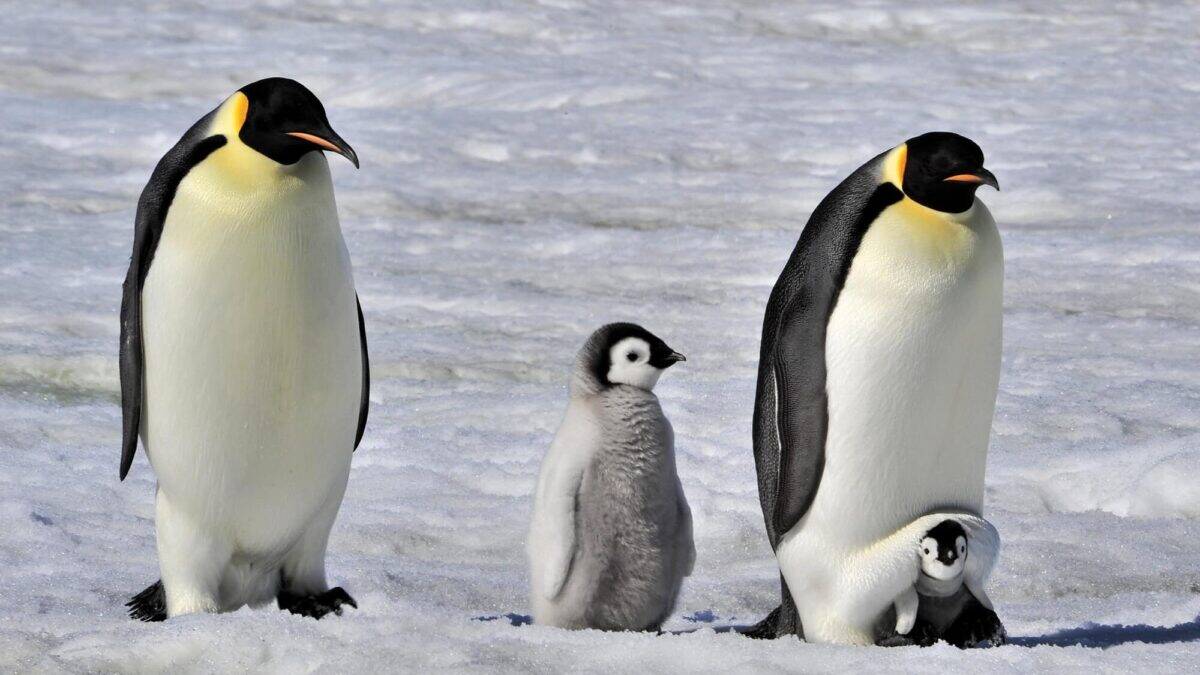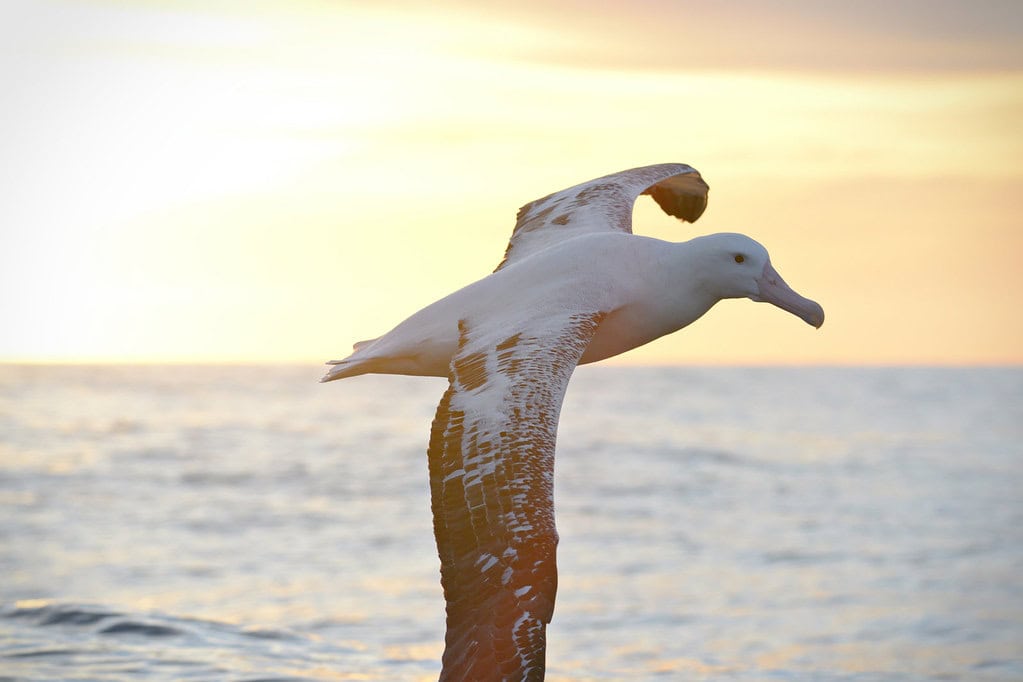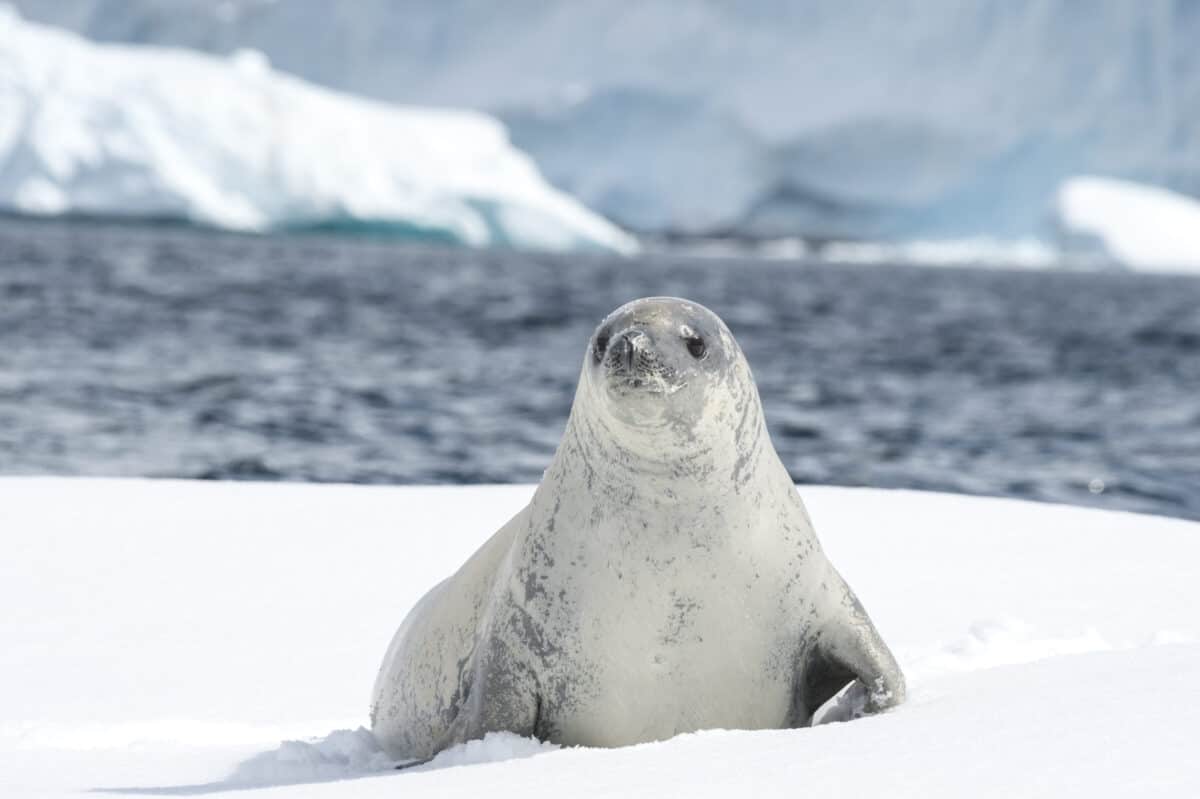The Southern Ocean, encircling Antarctica and connecting the Atlantic, Pacific, and Indian Oceans, remains one of Earth’s last truly wild frontiers. This vast expanse of icy waters harbors a remarkable array of wildlife that has adapted to some of the harshest conditions on our planet. For adventurous travelers embarking on expedition cruises to this remote region, the wildlife encounters can be nothing short of extraordinary. The combination of nutrient-rich waters and relative isolation has created a unique ecosystem where specialized species thrive, many found nowhere else on Earth.
From massive marine mammals to resilient seabirds, the Southern Ocean offers wildlife viewing opportunities that rank among the most spectacular in the world. These waters support a complex food web built on the foundation of krill, tiny crustaceans that flourish in these cold waters and support much of the region’s biodiversity. As we explore ten of the most amazing animals you might encounter while cruising these southern waters, prepare to be astonished by nature’s ingenuity and the remarkable adaptations that allow these creatures to thrive in such extreme conditions.
Emperor Penguins: The Antarctic Icons

No creature symbolizes the Antarctic region quite like the majestic Emperor penguin (Aptenodytes forsteri). Standing at approximately 4 feet tall and weighing up to 88 pounds, these are the largest of all penguin species and perhaps the most remarkable. Their distinctive appearance—featuring a black head and back contrasting with a white belly, bright yellow ear patches, and an orange-yellow breast—makes them instantly recognizable. What truly sets Emperor penguins apart, however, is their extraordinary breeding cycle, which takes place during the Antarctic winter when temperatures can plummet to -40°F and below.
Male Emperors endure these brutal conditions while incubating a single egg balanced on their feet and covered by a feathered pouch, fasting for up to 115 days while the females return to the sea to feed. From expedition cruise ships, you might spot Emperor penguins on ice floes, though to see their breeding colonies, most vessels offer helicopter excursions to remote locations like Snow Hill Island. Their remarkable diving abilities are equally impressive—they can plunge to depths of 1,800 feet and hold their breath for up to 20 minutes as they hunt for fish, squid, and krill in the ocean depths.
Humpback Whales: Acrobats of the Deep

The Southern Ocean serves as a critical summer feeding ground for humpback whales (Megaptera novaeangliae), which migrate annually from tropical breeding areas to feast on the region’s abundant krill. These magnificent cetaceans, growing up to 52 feet long and weighing approximately 40 tons, are among the most entertaining marine mammals to observe. Humpbacks are renowned for their spectacular surface behaviors—breaching completely out of the water, slapping their long pectoral fins (which can reach up to 16 feet in length), and performing tail lobbing displays that can be seen from considerable distances.
Expedition cruises in the Antarctic Peninsula region between December and March offer excellent opportunities to witness these gentle giants. Each humpback has a unique pattern on the underside of its tail flukes, allowing researchers to identify individuals and track their migrations, which can span over 5,000 miles annually. Perhaps most magical are encounters with their haunting songs—complex vocalizations that can last up to 30 minutes and travel for miles underwater—or moments when curious humpbacks approach vessels in a behavior known as “mugging,” providing passengers with unforgettable close encounters that showcase their intelligence and curiosity.
Leopard Seals: The Antarctic’s Apex Predator

With their snake-like head, powerful jaws, and formidable teeth, leopard seals (Hydrurga leptonyx) embody the raw, predatory spirit of the Antarctic ecosystem. These solitary hunters, named for their spotted coats, are the second-largest species of Antarctic seal, with females reaching lengths of up to 12 feet and weights of 1,100 pounds—significantly larger than males. As apex predators, they display remarkable versatility in their diet, preying on penguins, other seals (particularly crabeater seal pups), fish, squid, and krill. Their hunting technique when pursuing penguins is particularly strategic—they patrol the edges of ice floes, waiting to catch penguins as they enter or exit the water.
Leopard seals possess a distinctive feature that sets them apart from other pinnipeds: their unique double-pointed molars, which allow them to strain krill from the water while their powerful canine teeth enable them to grip larger prey. From expedition cruise zodiacs, you might observe leopard seals lounging on ice floes, their reptilian appearance and self-assured demeanor creating an unmistakable presence. While they have a fearsome reputation, attacks on humans are extremely rare, though proper distance should always be maintained. Encountering these magnificent predators in their natural habitat offers a glimpse into the essential role they play in maintaining the balance of the Antarctic marine ecosystem.
Wandering Albatross: Masters of the Wind

The Wandering Albatross (Diomedea exulans) stands as one of nature’s most impressive engineering marvels, holding the record for the largest wingspan of any living bird—up to 11.5 feet. These magnificent seabirds are the ultimate expression of evolutionary adaptation to life on the open ocean, capable of staying airborne for months at a time as they circumnavigate the Southern Ocean. Using a flying technique called dynamic soaring, they harness the energy from wind gradients over waves, allowing them to cover vast distances with minimal energy expenditure—some individuals travel more than 75,000 miles in a single year.
Cruising the Southern Ocean provides excellent opportunities to observe these birds in their element, especially in the Drake Passage and around sub-Antarctic islands like South Georgia, where they breed. Their relationship with the sea is lifelong—Wandering Albatrosses can live up to 60 years, spending about 95% of their lives in flight over the ocean and only returning to land to breed every two years. With their ghostly white plumage (which darkens with age), black wing tips, and hooked yellow bill, they present an unforgettable sight as they glide effortlessly alongside ships, seemingly immune to even the fiercest storms. Unfortunately, these remarkable birds face serious threats from longline fishing operations, making every sighting all the more precious.
Orcas: The Wolves of the Sea

The Southern Ocean hosts several ecotypes of orcas (Orcinus orca), commonly known as killer whales, each with specialized hunting strategies and prey preferences. These highly intelligent marine mammals—actually the largest members of the dolphin family—travel in tight-knit family groups called pods and showcase some of the most sophisticated hunting behaviors in the animal kingdom. The Type A orcas of Antarctica hunt primarily marine mammals, including seals and minke whales, while Type B orcas specialize in hunting seals using the remarkable technique of creating waves to wash them off ice floes. Type C orcas, the smallest variant, primarily target fish.
Witnessing a pod of orcas in the wild is an electrifying experience that expedition cruise passengers often describe as life-changing. Their distinctive black-and-white coloration makes them instantly recognizable as they slice through the water, their tall dorsal fins (up to 6 feet high in adult males) visible from considerable distances. Antarctic waters offer exceptional viewing opportunities, particularly in the Antarctic Peninsula region and around South Georgia Island. Their complex social structures, with knowledge passed down through generations, and their diverse hunting strategies highlight their remarkable intelligence. Recent research suggests that different orca populations may even have distinctive “dialects” in their vocalizations, essentially representing different cultures within the same species.
Antarctic Minke Whales: The Curious Leviathans

The Antarctic Minke whale (Balaenoptera bonaerensis), though smaller than many of its baleen whale relatives at “only” 35 feet long and 20,000 pounds, offers some of the most memorable wildlife encounters in the Southern Ocean. These relatively abundant whales are known for their inquisitive nature, often approaching ships and zodiacs with what appears to be genuine curiosity. Their sleek, dark bodies with distinctive white bands on their pectoral fins move gracefully through the water as they feed primarily on krill, consuming up to two tons daily during the productive Antarctic summer.
Minke whales possess unique feeding adaptations, including expandable throat pleats that allow them to take in enormous volumes of water before filtering out krill through their baleen plates. They’re also known for their distinctive surfacing pattern, often showing only their small, curved dorsal fin and rolling their back without displaying their tail flukes. Scientists have documented an interesting acoustic behavior nicknamed the “bio-duck” sound—a series of pulse trains that resembles a duck quack—which minke whales produce for reasons not yet fully understood. For cruise passengers, encountering these whales often provides the closest large whale experience, as minkes frequently approach vessels, spy-hop to observe their surroundings, and even follow zodiacs, seemingly as interested in humans as we are in them.
Chinstrap Penguins: The Numerous Navigators

With an estimated global population of 8 million birds, Chinstrap penguins (Pygoscelis antarcticus) form some of the largest and most impressive penguin colonies in the Antarctic region. Named for the distinctive narrow black band that runs under their heads, giving the appearance of a helmet strap, these medium-sized penguins stand about 30 inches tall and weigh approximately 9 pounds. Their remarkable swimming abilities allow them to reach speeds of up to 20 miles per hour underwater as they pursue their primary prey—krill and small fish—sometimes diving to depths of 230 feet during hunting forays that can last several minutes.
Expedition cruises to the Antarctic Peninsula and South Sandwich Islands offer excellent opportunities to witness the bustling colonies of Chinstrap penguins, where hundreds of thousands of birds can occupy a single rookery, creating a cacophony of sound and activity. These hardy birds build nests of small stones on rocky outcroppings, often in seemingly precarious locations on steep hillsides, which they access via “penguin highways”—well-worn paths created by countless penguin feet traveling between the colony and the sea. During the breeding season, which peaks in December and January, visitors can observe the full spectrum of penguin family life, from elaborate courtship rituals and territorial disputes to the tender care of chicks. The sheer abundance of these charismatic birds creates one of the Southern Ocean’s most memorable wildlife spectacles.
Elephant Seals: The Colossal Beach Masters

The Southern Elephant seal (Mirounga leonina) represents the pinnacle of sexual dimorphism among marine mammals, with adult males reaching astonishing proportions—up to 20 feet in length and weighing more than 8,000 pounds, making them the largest seals on Earth. Named for the males’ distinctive proboscis, an elongated snout used to produce resonating roars during the breeding season, these massive creatures create one of nature’s most dramatic spectacles when they gather on sub-Antarctic beaches. The breeding season, particularly on South Georgia Island, showcases fierce battles between rival males—known as beach masters—who fight to control harems of up to 100 females.
From expedition cruise landings, visitors can safely observe these enormous animals as they haul out on beaches, their blubber-laden bodies seeming almost fluid as they move awkwardly on land. Despite their cumbersome appearance ashore, elephant seals are exceptional divers, plunging to extraordinary depths—over 5,000 feet—and staying submerged for up to two hours as they hunt for squid and fish. Their bodies undergo remarkable physiological adaptations during these dives, including collapsed lungs and reduced heart rates to conserve oxygen. Juvenile elephant seals, with their large, expressive eyes and more manageable size, often approach visitors with innocent curiosity, creating memorable encounters that contrast sharply with the intimidating presence of the massive, scarred bull seals that dominate the breeding beaches.
King Penguins: The Regal Colonists

Second only to Emperors in size among penguin species, King penguins (Aptenodytes patagonicus) create some of the most visually stunning wildlife spectacles in the Southern Ocean region. Standing approximately 3 feet tall and adorned with vibrant orange-gold patches on their head, neck, and chest, these elegant birds gather in colonies that can number hundreds of thousands of individuals. The most famous of these is on South Georgia Island, where at St. Andrews Bay, over 200,000 King penguins create a living carpet that stretches as far as the eye can see, accompanied by the constant symphony of their trumpet-like calls.
What makes King penguins particularly interesting is their unusual breeding cycle, which spans more than a year. Unlike most penguins, Kings don’t build nests but instead incubate a single egg on their feet. Their chicks, covered in brown fluffy down that gives them a comical appearance quite unlike their elegant parents, spend over 10 months developing before molting into adult plumage. For expedition cruise passengers landing at sites like Salisbury Plain or Gold Harbour on South Georgia, the experience of walking near these massive colonies ranks among the world’s premier wildlife experiences. The birds show remarkable tolerance for respectful human visitors, often approaching out of curiosity, allowing for extraordinary photographic opportunities as they go about their daily routines against the backdrop of glaciated mountains and tussock-covered hillsides.
Crabeater Seals: The Misnamed Multitudes

Despite their misleading name, Crabeater seals (Lobodon carcinophaga) don’t actually eat crabs at all. Instead, these streamlined pinnipeds are krill specialists with highly adapted multilobed teeth that function as sieves to filter these small crustaceans from the water. With an estimated population of 15-40 million individuals, they are believed to be the most abundant seal species on Earth and consume more krill than any other species on the planet—approximately 63 million tons annually. Their pale cream to silver-gray bodies, which can reach lengths of 8.5 feet and weights of around 500 pounds, are often marked with distinctive scars, the result of encounters with their primary predator, the leopard seal.
For cruise passengers exploring the Antarctic Peninsula and surrounding waters, Crabeater seals are commonly spotted resting on ice floes, typically in small groups. Their relatively slender build compared to other Antarctic seals, along with their distinctively elongated snout, makes them recognizable even from a distance. These seals are supremely adapted to life in the pack ice zone, using their specialized front teeth to carve breathing holes in newly formed ice. Their population success illustrates the incredible productivity of the Antarctic ecosystem, where the abundance of krill supports vast numbers of specialized predators. When approached carefully by expedition zodiacs, Crabeater seals often remain calmly on their ice platforms, occasionally raising their heads to observe visitors before returning to their essential activity of resting between feeding bouts.
The Extraordinary Wildlife Experiences of the Southern Ocean

The Southern Ocean represents one of the last great wildlife frontiers on our planet, offering encounters with creatures that have evolved remarkable adaptations to survive in one of Earth’s most challenging environments. From the grace of albatrosses soaring effortlessly above towering waves to the sight of massive elephant seals battling on sub-Antarctic beaches, these experiences create lasting impressions that transcend ordinary wildlife viewing. The privileged few who venture to these remote waters return with a deeper appreciation for the resilience and diversity of life in seemingly inhospitable conditions.
As climate change continues to impact polar regions at an accelerated pace, witnessing these magnificent creatures in their natural habitat becomes both more precious and more poignant. Many Southern Ocean species face uncertain futures as sea ice patterns change, ocean acidification increases, and human impacts extend to even these remote waters. Responsible expedition cruising provides not only unforgettable wildlife encounters but also creates ambassadors for conservation, as travelers share their experiences and advocate for the protection of these vulnerable ecosystems.
For those fortunate enough to cruise these southern waters, each wildlife sighting becomes more than just a photographic opportunity—it becomes a connection to a world where nature still holds dominion, where the rhythm of life is dictated by the elements, not by human hands. It is a world where survival hinges on ancient instincts, seasonal migrations, and the delicate balance of an ecosystem forged in ice and time. In witnessing these moments—whether it’s a penguin colony bustling with activity or a solitary whale breaching against a backdrop of glaciers—travelers gain a rare glimpse into the raw, untamed power of nature. These experiences often stir a sense of responsibility, reminding us that the fate of these remote realms is tied to the choices we make far beyond their icy shores.
- This Bird Sets Forests on Fire - August 17, 2025
- Orcas Have Regional Accents - August 17, 2025
- The Largest Group Migration in the Animal World - August 17, 2025

